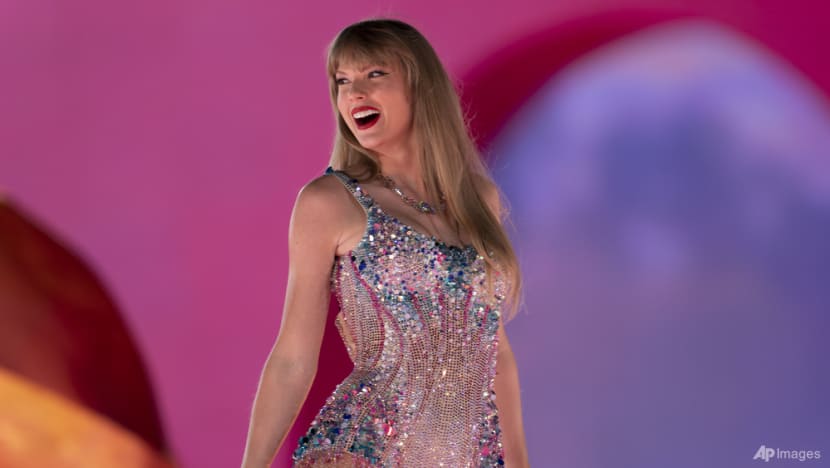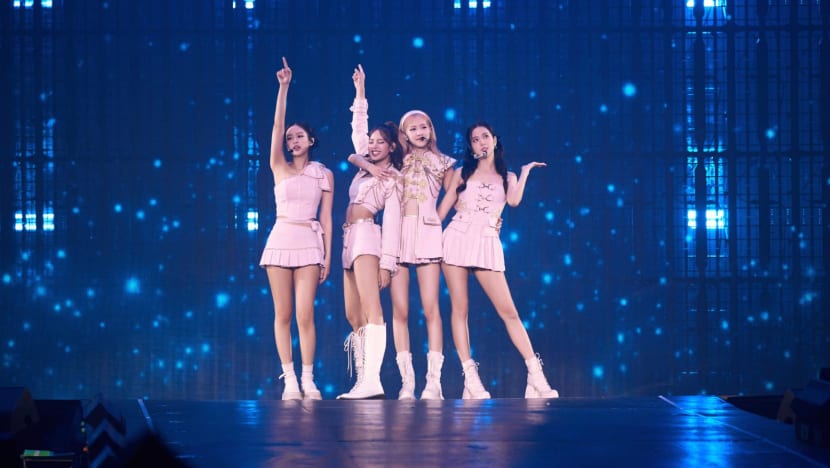Early access to concerts and free iPads: Can banks retain customers with sign-up incentives?
While giving away freebies may increase initial customer acquisition, this is not sustainable in the long run, says a marketing expert.

Taylor Swift performs during The Eras Tour on May 5, 2023, in Nashville, Tennessee. (File photo: AP/George Walker IV)
SINGAPORE: With the return of concerts after the COVID-19 event drought, local banks have found new ways to recruit younger customers, but the jury is still out on whether this will help them retain customers in the long term.
In June, UOB announced it would be the official bank partner for Taylor Swift’s Singapore stop on her tour. Maybank was also the official bank partner for K-pop act Blackpink’s Singapore concert in May.
This prompted frantic fans across the region to sign up for debit and credit cards with the banks to gain access to priority ticket sales. Those who did not sign up for cards looked for friends and family members who held cards with the bank to get access to the presale tickets.
In the week after the announcement, UOB saw a 45 per cent increase in credit card applications across Southeast Asia, its head of group personal financial services Jacquelyn Tan told CNA.
In Singapore, the number of approved credit cards surged by more than 50 per cent, she added.
The move paid off for some fans – the Taylor Swift UOB presale tickets sold out in three hours on Jul 5, with Singapore customers clinching more than 70 per cent of the tickets, said Ms Tan.
Another UOB sale of reserved tickets on Jul 7 went similarly, with two-thirds of tickets snapped up by Singapore customers, and the remaining by regional cardholders.
Customers spent an average of S$1,000 (US$760) on each transaction, or the equivalent of about four tickets.
As a sponsor of the Blackpink concert, Maybank said 30 per cent of customers who bought tickets through the presale access were new sign-ups or returning customers.
Almost 50 per cent of Maybank debit card holders who bought tickets to the concert were under the age of 35, compared with 17 per cent of credit card customers, said the bank’s head of cards and unsecured lending Tessa Er.
“The willingness to spend is also apparent among this younger group of debit cardmembers – average of 20 per cent higher in terms of ticket purchases per debit cardmember,” she added.

WHAT DO CUSTOMERS REALLY WANT?
While these strategies may appeal to younger audiences and are successful in recruiting new sign-ups, the long-term success of this strategy depends on the bank’s ability to engage and retain these new customers, experts said.
Aligning themselves with popular cultural events like concerts featuring renowned artists allows banks to tap into the interests and preferences of younger customers, said Adjunct Professor Joe Escobedo with the National University of Singapore’s (NUS) business school.
“What banks think people want may differ from what the consumer is requesting. While banks may think consumers want partnerships with popular artists, one should check online reviews to find out what they want,” he added.
For example, bank users may complain online about slow service, said Adj Prof Escobedo.
“In other words, you can paint your house any beautiful colour you like, but if the foundations are shoddy, the whole building will eventually collapse.”
Associate Professor Lewis Lim with the Nanyang Technological University’s (NTU) Nanyang Business School said banks have to create emotional attachment and cultivate “sustained loyalty” to a credit card brand.
He cited the green American Express charge card, which was a status symbol in the 70s and 80s.
“These days, the credit card market is so cluttered and competitive that the game is more about acquiring new sign-ups and banks snatching customers from one another.
“As a result, there is widespread brand-switching and very little true loyalty to any particular card. Consumers learn to play one card brand off against another just to extract the biggest benefit, and they will avoid paying the annual fees at all costs.”
Banks that retain some cardholders beyond the first year may consider them loyal customers, but they may simply have forgotten to cancel their cards, said Assoc Prof Lim.
“Any remaining loyal customers may also be upset by the bank’s tactics that favour new customers over existing customers, and they will eventually leave to become new customers of another bank’s card.”
FREEBIES: A TACTIC WITH SHORT-TERM FOCUS
Concert tickets are not the only tactic used by banks to recruit new sign-ups. Citibank consistently rolls out new freebies and promotions for customers who sign up for credit cards.
Over the past few years, new Citibank customers have received Nintendo Switches, iPads and various Dyson products when signing up for a credit card.
The bank said its customer sign-ups increase by more than 20 per cent when new promotions are announced.
When asked about the attrition rate of these sign-ups, Citibank did not provide figures but said "most ... remain active on their card after the first year, even after receiving the promotion items".
Giving away freebies is a tactic with a short-term focus, and this works to encourage immediate action, said Dr Hannah Chang of the Singapore Management University.
But sales promotion strategies are not designed for achieving longer-term objectives, unless new promotions are introduced repeatedly over time, she added.
The perceived value of freebies holds “great significance”, and a free gift that is desirable and sought after can attract customers and encourage brand engagement, said Nanyang Business School's Assistant Professor Charlene Chen.
While these strategies may increase initial customer acquisition, they are not sustainable in the long run, she added.
Banks should also consider the long-term impact on customer retention, said Asst Prof Chen. For example, banks can offer loyalty points to customers, such as cashback rewards, once the card is activated.
“Once they consume the initial benefit, they will be happy to continue using the card because it meets their needs and wants. Bottom line: Don’t just choose something popular, make sure it entices the right crowd you want.”
















